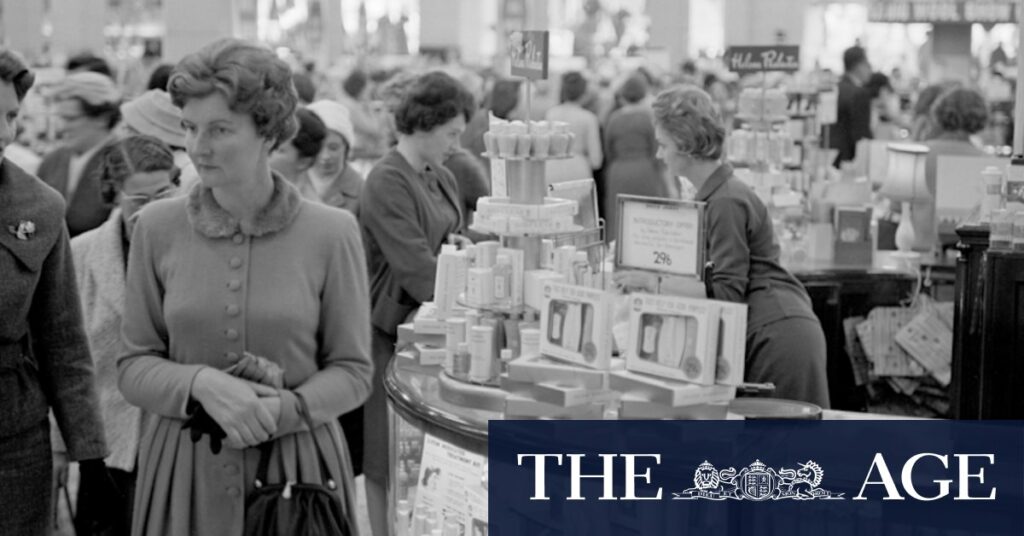
In a world where consumer habits are rapidly evolving, two of Australia’s most iconic department stores, Myer and David Jones, are grappling with the challenge of attracting younger customers. These institutions, once the epitome of retail glamour and sophistication, are now striving to maintain relevance amidst a digital shopping revolution.
Historically, department stores were more than just places to shop; they were cultural landmarks. In the 1940s, Miranda Cole’s grandmother would leave her fur coat in the cloakroom of Myer in Melbourne, while her mother continued the tradition by taking her daughters there for special occasions in the 1960s. These stores were not just about purchasing goods but creating memories, from high teas in the Myer Mural Hall to choosing wallpaper in the home furnishings department.
The Nostalgia of Department Stores
Many Australians harbor fond memories of department stores. In the 1970s, Myer was a monolithic presence in Toowoomba, Queensland, where children were left in childcare centers while parents shopped. Social media is awash with nostalgia, as people recount tales of family outings and holiday jobs at these retail giants.
Department stores like Myer and David Jones have been immortalized in literature and media, reflecting their deep cultural significance. From Émile Zola’s “Au Bonheur des Dames” to the BBC series “The Paradise,” these stores have been depicted as more than just retail spaces; they are part of a shared cultural backdrop.
Challenges in a Changing Retail Landscape
Today, the landscape has shifted dramatically. The global financial crisis, the COVID-19 pandemic, and the rise of online shopping have all taken their toll. Myer and David Jones have had to close several stores, and their once-vibrant food halls have diminished.
Paul Zahra, former CEO of David Jones, notes that department stores worldwide face structural challenges. “They’re having to rethink their physical footprint and invest heavily in digital to remain relevant,” he says. The shift from personal service to digital loyalty programs is a significant change, as stores aim to create personalized experiences through data and algorithms.
Adapting to New Consumer Expectations
The current CEOs of Myer and David Jones are optimistic about the future. Myer has expanded its network by acquiring Premier Investments’ clothing division, while David Jones is focusing on its “store of the future” in Chatswood, Sydney. Both companies are investing in loyalty programs to drive customer engagement.
Gwen Sutton, who worked at David Jones in the 1940s, recalls the impeccable service and glamour of the store. Today, that personal touch is being replaced by digital strategies aimed at creating “warm connections” with customers.
The Future of Fashion and Retail
Fashion remains central to the department store experience. David Jones has historically been a tastemaker, showcasing international designers like Christian Dior. Today, the focus is on delivering newness and exclusivity, with brands like SKIMS and Marks & Spencer joining the lineup.
However, beauty services have lagged behind. Both Myer and David Jones are looking to revamp their beauty offerings to compete with specialized retailers like Mecca and Sephora. Patty Huntington, a fashion journalist, suggests that department stores need to offer unique experiences to attract younger shoppers.
Luring the Younger Generation
Both Myer and David Jones are keenly aware of the need to appeal to younger consumers. Olivia Wirth, Myer’s executive chair, emphasizes the importance of loyalty programs in engaging this demographic. Myer One, with its 4.6 million active members, is seen as a critical tool in this effort.
Meanwhile, David Jones is implementing its Vision 2025+ strategy, focusing on omnichannel retail and technological upgrades. The launch of a new loyalty program in partnership with Qantas is part of this transformation.
Despite these efforts, the future remains uncertain. As retail analyst Bernie Brookes notes, “It’s enormously difficult to transform a business while trying to continue to pay dividends.” Yet, both companies are determined to adapt and thrive in a rapidly changing market.
For now, loyal customers continue to frequent these storied institutions, keeping the legacy of Myer and David Jones alive. As they navigate the challenges of modern retail, these department stores are striving to blend nostalgia with innovation, hoping to capture the hearts of a new generation.





